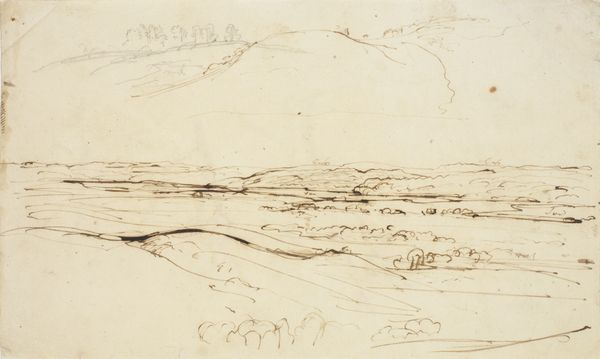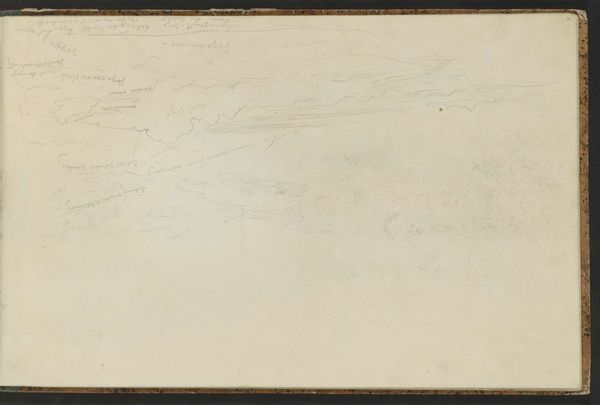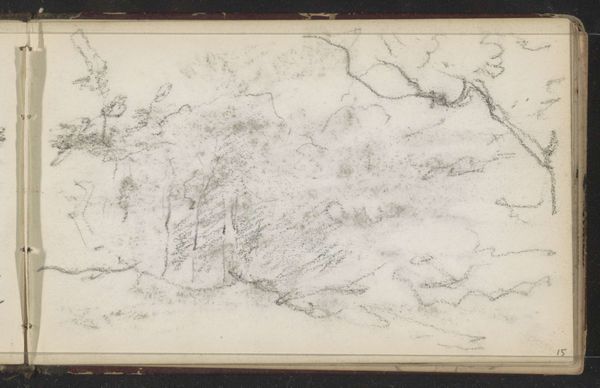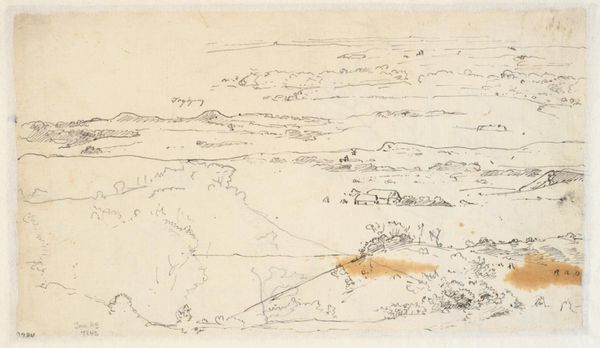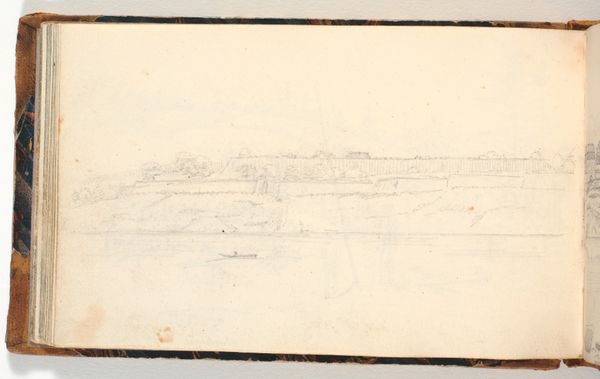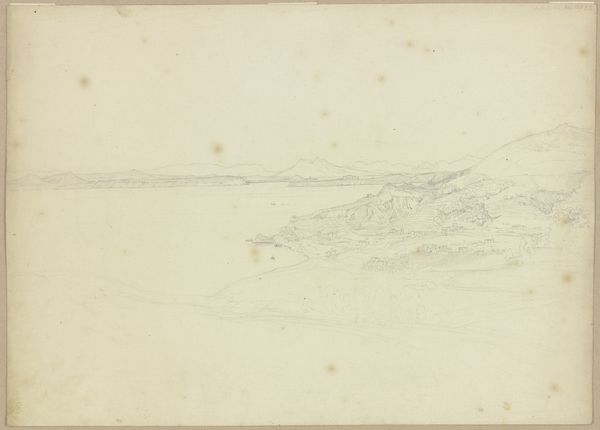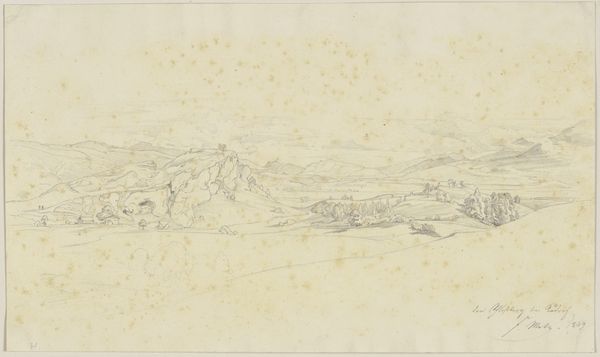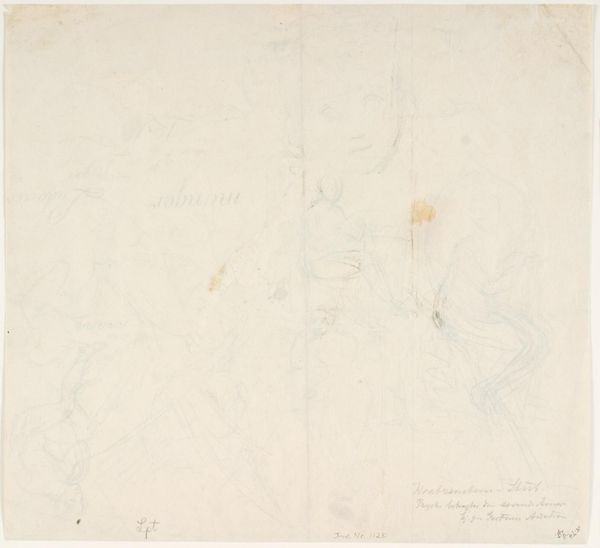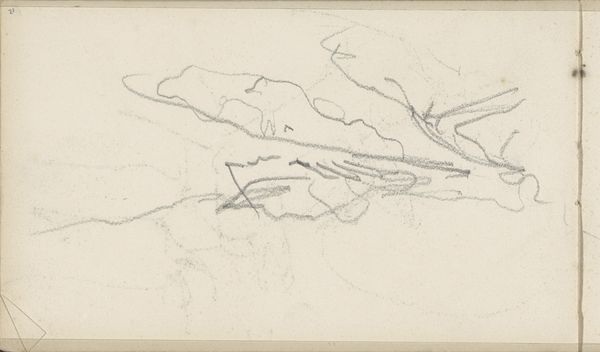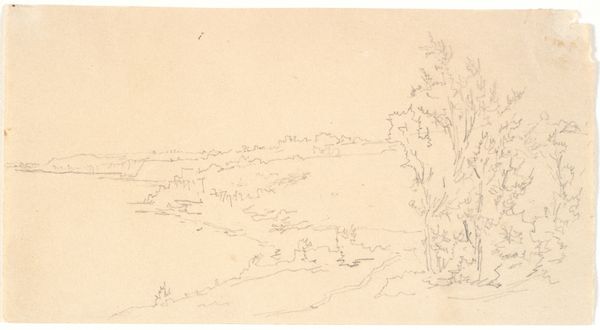
drawing, paper, ink
#
drawing
#
water colours
#
ink painting
#
landscape
#
paper
#
ink
#
realism
Dimensions: 220 mm (height) x 272 mm (width) (bladmaal)
Curator: Dankvart Dreyer, a name not often whispered alongside titans of landscape art, yet here at the SMK, we have this quiet marvel, "Landscape with House. Tree Studies", dating back to the late 1830s. Made with ink on paper. Editor: Immediately I'm drawn to the lightness, the sketched quality, almost like catching a fleeting thought. A fragile little house nestled there, but these tree limbs are demanding attention. It’s making me feel both grounded and a bit melancholy, actually. Curator: Grounded...melancholy... that sums up much of the art world at the time when Romanticism was slowly being eroded and pushed out of the zeitgeist by realism. The drawing reveals his attention to the details of the Danish countryside. Notice how Dreyer isn’t glorifying nature here but depicting the everyday? The small hut. Ordinary trees. There is no overt grandiosity. Editor: Precisely! And there’s something radical about turning your attention to the overlooked, the so-called mundane. Whose landscapes get celebrated and why? Are they accessible? Inviting? Or exclusionary? Even in its sketchiness, it avoids idealized or pictorial conventions by emphasizing its ordinariness. Curator: The composition has a fascinating tension, though. Look how the large tree seems to be trying to consume that diminutive building. The piece makes me question shelter and the possibility of finding harmony between human architecture and wild, ungovernable natural forces. It does, for me anyway, evoke a palpable sense of anxiety about humanity’s place in nature. Editor: Absolutely, that tension speaks volumes. The individual dwelling against a more sprawling ecosystem – the politics of land, ownership, and belonging simmering beneath the surface. Whose land is this? Who gets to build here and thrive? The scale feels imbalanced, suggesting vulnerability, and speaks directly to conversations we are having today about environmental justice and community resilience. Curator: What initially strikes me is how effortlessly Dreyer marries careful observation with this free, expressive quality, like catching the land in medias res. Editor: And for me, I walk away contemplating how something as seemingly simple as a landscape can serve as a space to ruminate over who and what we choose to see and value.
Comments
No comments
Be the first to comment and join the conversation on the ultimate creative platform.
